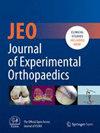Sex differences in intra-articular treatment outcomes for knee osteoarthritis: Current evidence and research gaps: A systematic review and meta-analysis
Abstract
Purpose
The aim of this systematic review and meta-analysis was to quantify and compare the evidence on sex-specific outcomes following intra-articular injections of corticosteroids (CS), hyaluronic acid (HA), platelet-rich plasma (PRP) and cell-based therapies in patients affected by knee osteoarthritis (OA).
Methods
A literature search was conducted on PubMed, Cochrane and Web of Science in October 2024 according to PRISMA guidelines. Inclusion criteria were clinical studies of any level of evidence, a minimum of six patients, English language, no time limitations, on the use of intra-articular CS, HA, PRP and cell-based therapies for knee OA treatment. A meta-analysis was conducted for each product on the outcomes with sufficient data at short-term (<3 months) and mid/long-term (≥3 months) follow-ups.
Results
A total of 848 studies were included reporting on 99,443 patients (61.5 ± 24.7 years old, 65.8% women, 34.2% men). Out of these, only 21 articles (2.5% of the total, 2265 patients) presented sex-disaggregated data, including four studies with a CS treatment group (1.9% of CS patients), three with a HA group (0.2% of HA patients), 11 with a PRP group (5.9% of PRP patients) and eight with a cell-based therapy group (10.2% of cell-based therapies patients). The meta-analysis was performed on 15 studies (1387 patients) and did not show any statistically significant difference of VAS and WOMAC improvements at short- and mid/long-term follow-ups for any of the four injectable treatment approaches analysed.
Conclusion
There is a staggering lack of sex-disaggregated data in studies evaluating the most used intra-articular injective therapies for knee OA, with only 2.5% analysing women- and men-specific outcomes for CS, HA PRP and cell-based therapies. The analysis of this limited amount of sex-disaggregated data did not show statistically significant differences between women and men for any of the investigated injectable approaches. The substantial lack of disaggregation hinders the understanding of potential sex-specific effects of these treatments and underscores the need for a shift in data reporting in this field, with more robustly designed studies incorporating sex-stratified analyses.
Level of Evidence
Level I.




 求助内容:
求助内容: 应助结果提醒方式:
应助结果提醒方式:


